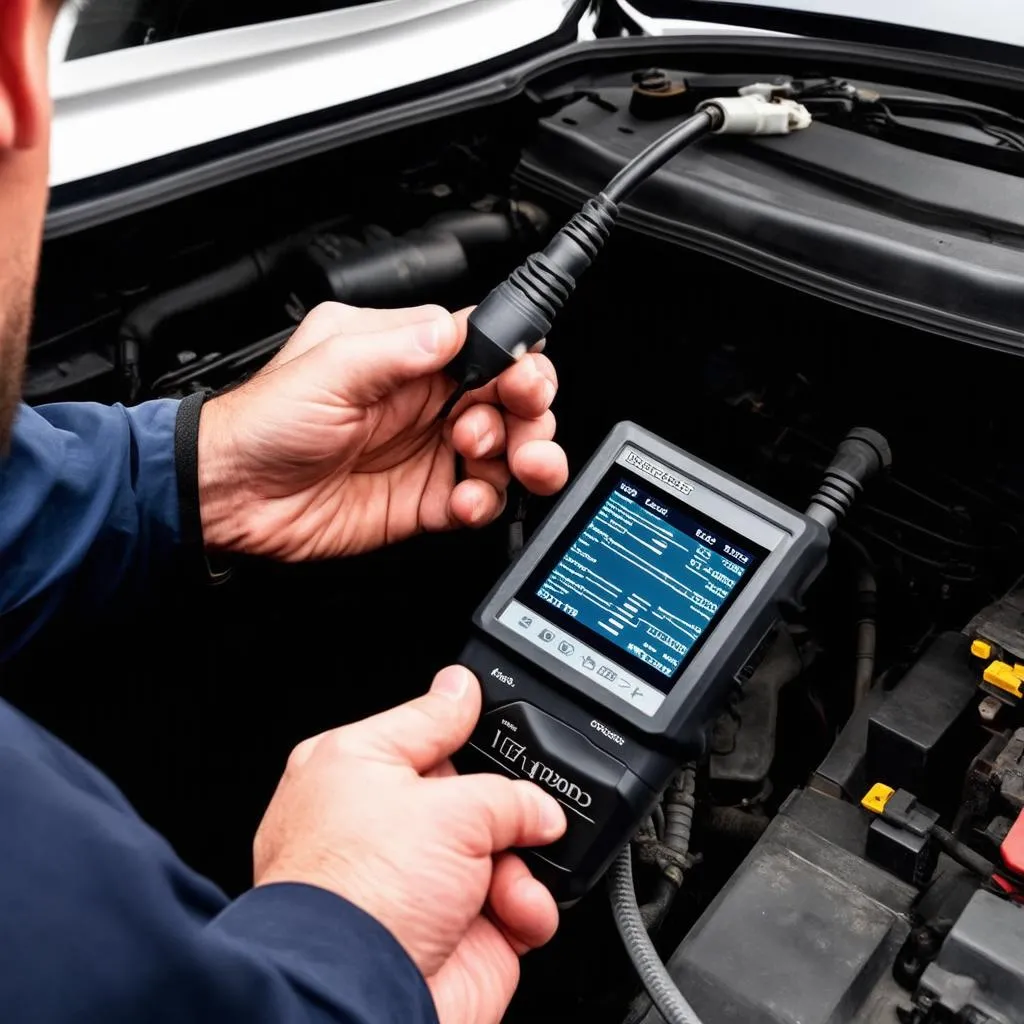Is your Mercedes S430’s dashboard temperature gauge giving you the cold shoulder? Don’t sweat it! This common issue can often be fixed with a bit of DIY know-how. Let’s dive into the reasons behind a faulty temperature gauge and walk through the steps to get it working again.
Why is My Mercedes S430 Dash Temp Gauge Acting Up?
Several culprits can cause your S430’s dashboard temperature gauge to malfunction. Here are some of the most frequent offenders:
- Faulty Coolant Temperature Sensor: This sensor is your car’s way of knowing how hot the engine coolant is. If it’s on the fritz, it can send inaccurate readings to your dashboard.
- Wiring Issues: Worn-out or damaged wiring between the sensor and the gauge can disrupt the flow of information, leading to a faulty display.
- Gauge Cluster Malfunction: While less common, the problem might lie within the instrument cluster itself.
mercedes-s430-dashboard|Mercedes S430 Dashboard|Close-up photo of a Mercedes S430 dashboard, focusing on the temperature gauge. The gauge should show an abnormally high or low temperature reading.
Spotting the Symptoms
How do you know if it’s actually the temperature gauge and not something else? Here are a few telltale signs:
- Fluctuating Temperature Readings: Does your gauge swing wildly between hot and cold, even when the engine temperature seems stable? That’s a red flag.
- Stuck Needle: Is your temperature needle stuck on cold, hot, or somewhere in between? This indicates a problem with the gauge or sensor.
- Check Engine Light: While not always directly related to the temperature gauge, a check engine light can sometimes signal a problem with the coolant temperature sensor.
coolant-temperature-sensor-location|Coolant Temperature Sensor Location|Photo of a car engine with the coolant temperature sensor circled or highlighted.
Gearing Up for the Fix
Before you roll up your sleeves, gather these tools:
- Replacement Coolant Temperature Sensor: Pick one specifically designed for your S430’s model year.
- Socket Wrench Set: You’ll need the right size to remove and install the sensor.
- Coolant: Have some extra coolant on hand in case you need to top off the system.
- Digital Multimeter (Optional): This tool can help you test the old sensor and verify the new one is working correctly.
Step-by-Step Repair Guide
Ready to tackle the repair? Follow these steps:
- Locate the Coolant Temperature Sensor: On most S430 models, you’ll find it near the thermostat housing on the engine block.
- Disconnect the Electrical Connector: Gently unplug the electrical connector from the sensor.
- Remove the Old Sensor: Use the appropriate socket wrench to loosen and remove the sensor from the engine.
- Install the New Sensor: Apply a small amount of sealant to the threads of the new sensor and carefully thread it into place. Tighten it securely but avoid overtightening.
- Reconnect the Electrical Connector: Plug the electrical connector back onto the new sensor.
- Refill Coolant: If necessary, top off your coolant level.
- Test Your Work: Start your engine and keep an eye on the temperature gauge. It should gradually rise to a normal operating temperature and remain steady.
Common Questions
Q: Can I drive my S430 with a faulty temperature gauge?
A: While technically possible for short distances, it’s strongly discouraged. Driving without a functioning temperature gauge prevents you from monitoring your engine’s heat. This could lead to overheating and severe engine damage.
Q: I replaced the sensor, but the gauge is still acting up. What now?
A: It’s possible there’s an issue with the wiring or the instrument cluster itself. Consider using a car diagnostic tool, like those offered by Cardiagtech, to read error codes and pinpoint the problem.
Q: How often should the coolant temperature sensor be replaced?
A: While not a regular maintenance item, it’s a good idea to consider replacing it if you’re experiencing problems or during other major engine work.
Getting Back on the Road
A malfunctioning dashboard temperature gauge can be a frustrating experience, but with the right knowledge and a bit of effort, you can often fix it yourself. Remember, using a high-quality diagnostic tool, like those provided by CARDIAGTECH, can help pinpoint the issue quickly and get you back on the road with confidence.
Disclaimer: This guide provides general information and may not cover all scenarios. If you’re unsure about any step, consult a qualified mechanic.

